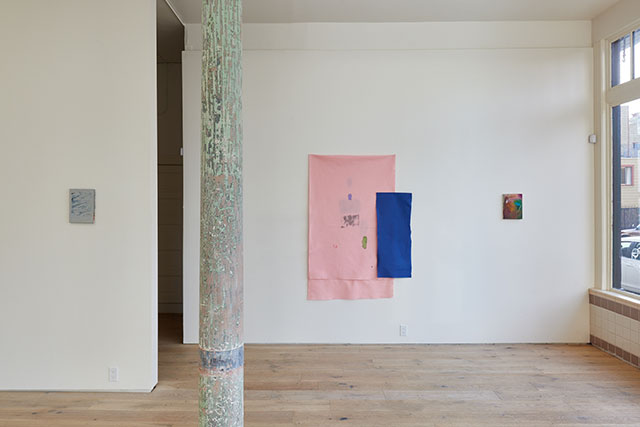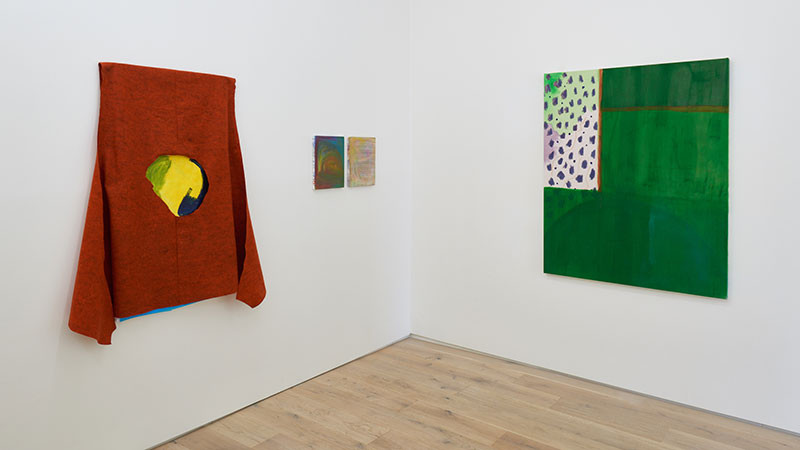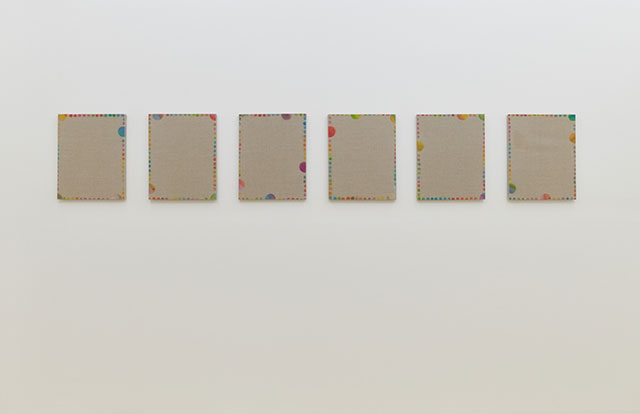At the corner of 22nd and Capp Streets in San Francisco, inside what used to be the Super Duper Limpio laundromat, sits Kiria Koula, exhibition space and bookstore. Once filled with washers and dryers, the site now holds paintings by local artist Teresa Baker and Brooklyn-based Jenny Monick. A new wall extends across three-quarters of the gallery to provide more wall space, creating an intimate back room away from the distractions of a busy Mission intersection.
In the gallery’s office-slash-bookstore, angled shelves display titles chosen by another Brooklynite, A.K. Burns. For each exhibition at Kiria Koula, an artist is asked to select books that represent their current line of research. Burns’ titles include feminist science fiction from 1975, an examination of homosexuality in America, Carl Sagan’s classic Pale Blue Dot and Samuel R. Delany’s radical sci-fi opus Stars in my Pocket Like Grains of Sand.
The heady, speculative texts are countered by the tangible objecthood of Baker and Monick’s paintings. Baker’s work is painting in the expanded field — draped felt and vinyl are just as common as stretcher bars and canvas. Monick’s small paintings on linen are easily identifiable as such, but they are the end result of years of accumulated layers, disparate gestures, approaches and decisions.

One group of Monick’s paintings zooms in on the application of paint itself. Her large brushstrokes resemble details of Gerhard Richter’s squeegee abstractions, capturing the movement of the brush in illusionistic vortexes of paint. Some of the color combinations in these paintings are thrilling. Standing spelled is awash in horizontal strokes of ochre and white. From done til dusk is an icy blue gray with glimpses of black, red and orange.
Then Monick’s focus turns to the edges. Three paintings share colorful dashes tracing an approximate rectangle within the edge of a metallic silver ground. Imprecise and irregular, the dashed outlines frame only more silver, the ghostly images of previous layers visible underneath. If these paintings are mirrors, they reflect the hazy uncertainty of past actions, striving for a more opaque and decisive present.



